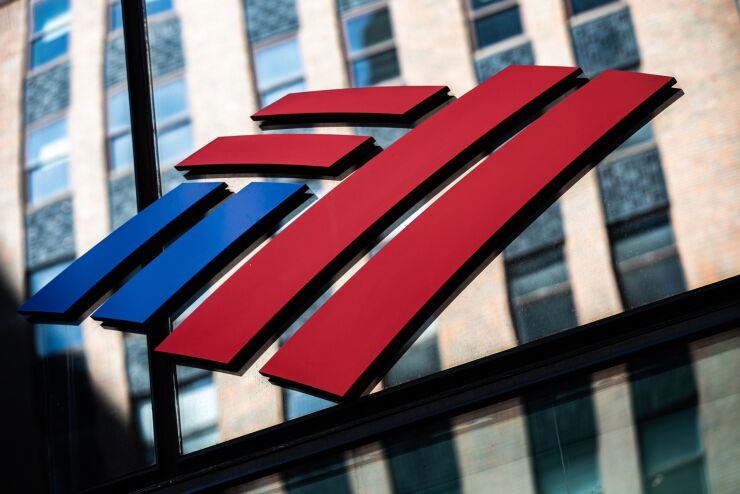Bank of America’s profit slid 52% as it joined rivals in preparing for an onslaught of consumer defaults spurred by the pandemic’s economic fallout.
Profit at the consumer-banking unit plunged 98% as the coronavirus shuttered much of the U.S. economy and caused tens of millions of Americans to lose their jobs. The company allocated $5.1 billion for loan losses in the second quarter, the most since 2010, as Bank of America joined its biggest rivals in predicting pain to come that contrasts with stock market optimism for a quick economic rebound.
Calling it “the most tumultuous period since the Great Depression,” Chief Executive Officer Brian Moynihan said in a statement that “strong capital markets results provided an important counterbalance to the Covid-19-related impacts on our consumer business.”
With its 4,300 branches across the country, Bank of America is often seen as a bellwether for the U.S. consumer. Government stimulus measures and bank forbearance have kept some individuals and businesses afloat, but the largest U.S. lenders used the first full quarter with the pandemic to prepare for coming pain.
JPMorgan Chase, Wells Fargo and Citigroup set aside almost $28 billion of credit-loss provisions when they reported results earlier this week, citing a
While Bank of America’s provision rose from the first quarter, it came in at roughly half the level of its closest rivals. Executives defended the discrepancy, saying the company has been conservative in its underwriting standards, having focused on customers who are more creditworthy and trimmed its exposure to the hardest-hit industries in recent years. They cited Federal Reserve stress tests that showed Bank of America had the lowest projected loan-loss rate among the four biggest U.S. lenders.
“We’re analyzing each relationship individually,” Chief Financial Officer Paul Donofrio told reporters on a conference call. “We’re going through the whole loan portfolio. Our teams have done that. We have really studied this and worked very closely with our customers.”
Shares of Charlotte, North Carolina-based Bank of America slid 2.4% to $24 at 12:36 p.m. in New York. They’ve declined 32% this year.
“Some of the underlying numbers were a little weaker,” particularly net interest income, Atlantic Equities analyst John Heagerty wrote in a note to investors. “With interest rates likely to remain low” and trading and investment-banking revenue “likely to fade” in the second half of the year, “there are obvious concerns about the future earnings trajectory of the bank.”
Bank of America joined other Wall Street firms in
Consumers and businesses are adapting to a new economic reality as some areas reopen, and others shut down again, in response to virus conditions, Moynihan said. While there are some encouraging signs of a rebound in consumer spending, economic projections have deteriorated, pointing to a recessionary environment that should last deep into 2022.
“It’s not a rosy picture,” he said on a conference call with analysts.
Net interest income, revenue from customers’ loan payments minus what the company pays depositors, fell 11% to $10.8 billion in the second quarter. On a fully taxable-equivalent basis, the figure was $11 billion, falling short of the $11.2 billion average estimate of 11 analysts in a Bloomberg survey. NII may drop by a “couple hundred million dollars” because of commercial-loan pay-downs in the third quarter, Donofrio said.
In the consumer business, the bank said it had processed about 1.8 million payment deferrals this year, of which 1.7 million were still in place as of July 9. That represents $29.8 billion of consumer balances, concentrated in credit cards.
Also in the second-quarter results:
- The bank’s efficiency ratio, a measure of profitability, worsened to 60% from 59% in the first quarter.
- Net income fell to $3.53 billion from $7.35 billion a year earlier. Per-share earnings totaled 37 cents, beating the 25-cent average estimate of 23 analysts.






